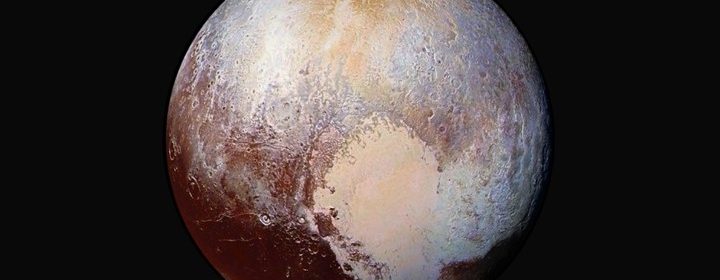Does Pluto Have a Hidden Ocean?

Scientists have been looking into Pluto’s possibility of having an ocean under its icy (a minus 380 degrees Fahrenheit) surface according to NASA’s New Horizon mission. This finding may shed some light on the internal world of Pluto. It has always been thought that Pluto was a frigid planet totally frozen over. They have discovered that Pluto may have an ammonia sea about 100 miles below the surface at a spot known as Sputnik Planum near its equator. The area is measured to be about 560 miles wide and located near the heart of Pluto. The crater was created when an object hit the planet in the outer edges of this solar system that was at least 125 miles across.
Charon, Pluto’s moon, and the dwarf planet have a gravitational pull that may have left the particles on the surface to form a mass instead of blasting it out into the galaxy. Because Charon and Pluto always face each other in the same direction might be the reason why scientists believe there is extra mass in Sputnik Planum. Sputnik Planum is located in the tidal axis between the surface and the moon. Its chemical contents may be heavier than the surface of Pluto and that might be why part of the mass may be from the nitrogen ice that fills the basin. Scientist don’t have enough information to explain this anomaly.
Scientists did run some simulations and found that if the surface had been hit by an object the particles would have blasted into the galaxy. More items like water from deep inside the planet would also have come out of the crater.
To keep the ocean from freezing the dwarf planet would need a high dose of ammonia and extra salt. They found that the ocean probably cannot contain life as we know it here on this planet. It’s very cold and extremely salty.
Scientists may not have to only look at habitable worlds but may find stars that have stable oceans and can eventually sustain life.

 Print
Print